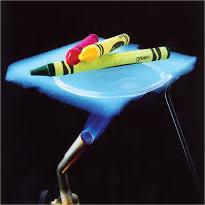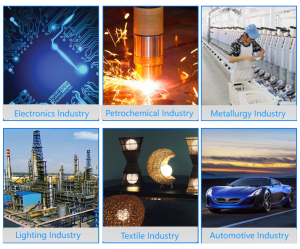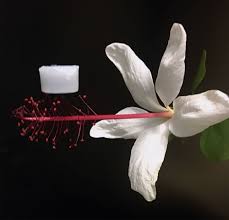Professional industry ceramic supplier, silicon nitride, silicon carbide, aluminum nitride and any other kinds of ceramics.
In the unrelenting and relentlessly requiring field of high-performance industrial products, few choices carry as much weight as the option of the ideal ceramic remedy. Silicon Carbide porcelains, renowned for their phenomenal hardness, thermal stability, and chemical resistance, typically emerge as the default choice. Nevertheless, a critical and profound difference exists within this material household: the selection between traditional Silicon Carbide Ceramics and the sophisticated, crafted option of ReactionSintered Silicon Carbide. This is not a mere comparison of specs; it is a tactical crossroads that can specify the success, performance, and durability of your most vital applications. This treatise simplifies the complexity to supply an unassailable overview for making the optimum option for your details commercial demands.
1. The Foundational Dichotomy: Unveiling Core Production Philosophies
At the heart of the selection process lies a fundamental understanding of just how these two courses of materials are born. Their production refines an imprint upon them of a unique set of abilities and limitations.
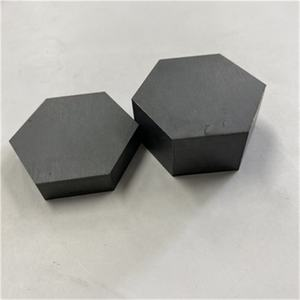
1.1 Traditional Silicon Carbide: The High-Temperature Crucible
Traditional SiC porcelains, such as sintered silicon carbide, are generally produced through a procedure of uncompromising high-temperature consolidation. This includes sintering great SiC powder at vast temperatures, often going beyond 2000 ° C, occasionally with the help of sintering additives. The result is a product of extraordinary pureness and thickness, with a microstructure consisting of straight bonded SiC grains. This process generates a ceramic with awesome inherent buildings but offers much less flexibility in shaping intricate geometries without considerable and costly post-sintering machining.
1.2 Reaction-Sintered Silicon Carbide: The Alchemy of In-Situ Improvement
Reaction Sintered Silicon Carbide , also referred to as Reaction Bonded Silicon Carbide, employs a cutting-edge and alchemical strategy. It starts with a porous preform made from αSiC powder and a carbon source. This preform is then infiltrated with molten silicon at temperature levels between 1500 ° C and 2000 ° C. The molten silicon does an incredible feat, wicking into the pores and responding with the carbon to develop brand-new, additional βSiC in situ, which bonds the primary αSiC bits together. The key differentiator is nearnetshape creating; the process includes very little dimensional adjustment, allowing for the cost-effective production of big and elaborately complicated parts that are impossible or much too pricey to make using conventional sintering routes.

2. The Performance Crucible: A Head-to-Head Characteristic Analysis
When put in the efficiency crucible, the distinct benefits and tradeoffs of each product come sharply into emphasis, dictated by their underlying microstructure.
2.1 Mechanical Prowess and Thermal Fortitude
Strength and Firmness at Range: SSiC typically has superior room-temperature flexural stamina and greater academic solidity due to its fully thick, single-phase SiC microstructure. However, progressed SiSiC make-ups have actually closed this void drastically. As an example, TRUNNANO records flexural strengths of 250 MPa at room temperature and an exceptional 280 MPa at 1200 ° C for their SiSiC, alongside a Mohs hardness of 13. Furthermore, specialized SiSiC compounds, like those enhanced with Mesocarbon Microbeads, have demonstrated flexural toughness as high as 223 MPa and impressive fracture sturdiness.
The HighTemperature Decision: The visibility of totally free silicon (normally 8% 15%) in SiSiC is its key performance limit. While it performs superbly at approximately 1380 ° C, its strength can go down at higher temperatures as the silicon softens. In contrast, SSiC, with no low-melting-point phases, maintains its mechanical stability at temperatures typically exceeding 1600 ° C, making it the undisputed champion for the most severe thermal settings.
2.2 The Rust and Wear Combat Zone
Both ceramics supply formidable resistance to abrasion and deterioration. SiSiC’s newly formed βSiC creates a durable skeletal system that supplies excellent wear resistance, as confirmed by its successful usage in mechanical seals and nozzles. Its corrosion resistance to many acids and alkalis is likewise phenomenal. However, the residual free silicon is prone to assault by hydrofluoric acid (HF) and hot, concentrated antacid. For applications entailing these particular chemicals, the pure, free-silicon-free microstructure of SSiC provides an extra durable and impenetrable protection.
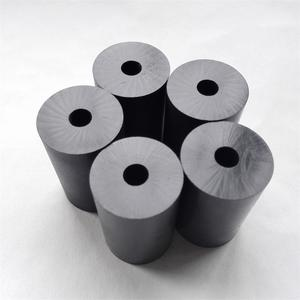
3. The Economic Imperative: Evaluating Cost Versus Intricacy
The option usually boils down to a critical equilibrium in between performance needs and financial feasibility, especially worrying part geometry and production volume.
3.1 The Unrivaled Economic Benefit of SiSiC
The critical advantage of ReactionSintered Silicon Carbide is its cost-effectiveness for complicated forms. The nearnetshape capacity dramatically decreases the need for pricey ruby grinding and postprocessing. Additionally, the reduced sintering temperatures and shorter cycle times compared to solid-state sintering result in considerable power cost savings and greater production throughput. For parts like big heater rollers, complicated nozzles, or detailed architectural parts, SiSiC is the unassailable economic champion.
3.2 The Understandable Premium of SSiC
The greater expense of Sintered Silicon Carbide is an understandable financial investment for applications where its unmatched high-temperature stability, ultimate corrosion resistance, or maximum academic density are nonnegotiable. When your application operates constantly in settings past 1380 ° C or is subjected to HF, the premium performance of SSiC gives a formidable roi via unwavering integrity and prolonged service life, warranting its costs in advance.
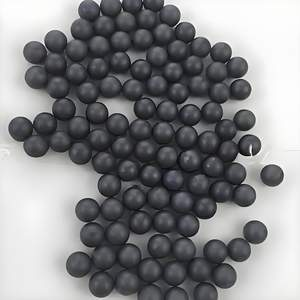
4. The Application Range: Mapping Products to Missions
Comprehending the leading application territories of each material supplies a clear roadmap for selection.
4.1 The Domain Name of ReactionSintered Silicon Carbide
High-Temperature Kiln Furniture: SiSiC is the foundation product for rollers, beams of lights, and setters in sintering heaters for batteries, ceramics, and electronics because of its thermal shock resistance and capacity to be made right into large sizes.
Advanced Put-On Components: Its excellent mix of firmness and durability makes it excellent for mechanical seal rings, abrasion-resistant linings, and sandblasting nozzles.
Chemical Refine Tools: SiSiC is commonly use for pumps, valves, and piping systems dealing with harsh slurries and chemicals, leaving out HF environments.
4.2 The World of Sintered Silicon Carbide
Demanding High-Temperature Equipment: SiC is vital for crucial elements in aerospace, such as generator blades and combustion liners, and for innovative commercial heating elements, where temperatures go beyond the limits of SiC.
Severe Rust Atmospheres: In the chemical industry, for dealing with HF or in detail sophisticated procedures, SSiC’s pure-phase microstructure is the conclusive and best option.
HighPerformance Shield: Its extreme firmness and compressive toughness make it a costs product for lightweight, high-protection ballistic armor systems.
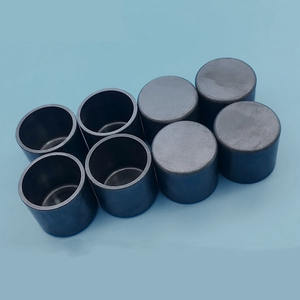
5. The Conclusive Choice Structure: Your Course to the Ideal Selection
Making the right selection is a methodical process. Utilize this structure to assist your decision.
5.1 The NonNegotiable Standards for Selecting SiSiC
You certainly need to pick ReactionSintered Silicon Carbide if your application demands any one of the following:
Complicated, NearNetShape Geometries: When part layout is complex and machining expenses are high.
Large-scale parts: For huge components, where the dimension restrictions of SSiC sintering are a constraint.
Superior Cost Efficiency: When stabilizing high performance with a constrained spending plan is critical.
Applications below 1380 ° C: For the majority of high-temperature commercial processes that operate within this array.
5.2 The Critical for Choosing Sintered Silicon Carbide
The selection for Sintered Silicon Carbide becomes nonnegotiable when confronted with these outright needs:
Long-term Operation Above 1380 ° C: When the solution temperature regularly exceeds the conditioning point of silicon.
Ultimate Rust Resistance: For environments entailing hydrofluoric acid or warm, focused antacids.
Maximum Purity is Paramount: In semiconductor handling or certain innovative study applications, where any type of totally free silicon is inappropriate.
To conclude, the journey between Silicon Carbide and ReactionSintered Silicon Carbide is not a search for a premium material, but for the ideal companion for your certain obstacle. ReactionSintered Silicon Carbide stands as a testimony to great engineering– a material that provides powerful performance, extraordinary geometric freedom, and compelling business economics for a huge landscape of commercial applications. By aligning its distinct strengths with your functional demands, you are not simply selecting a ceramic; you are purchasing a proven service for unwavering reliability, impressive efficiency, and a definitive competitive advantage.
Supplier
Tanki New Materials Co.Ltd. focus on the research and development, production and sales of ceramic products, serving the electronics, ceramics, chemical and other industries. Since its establishment in 2015, the company has been committed to providing customers with the best products and services, and has become a leader in the industry through continuous technological innovation and strict quality management.
Our products includes but not limited to Aerogel, Aluminum Nitride, Aluminum Oxide, Boron Carbide, Boron Nitride, Ceramic Crucible, Ceramic Fiber, Quartz Product, Refractory Material, Silicon Carbide, Silicon Nitride, ect. If you are interested in Reaction-Sintered Silicon Carbide Ceramics, please feel free to contact us.
Tags:silicon carbide,sic material,silicon carbide properties

